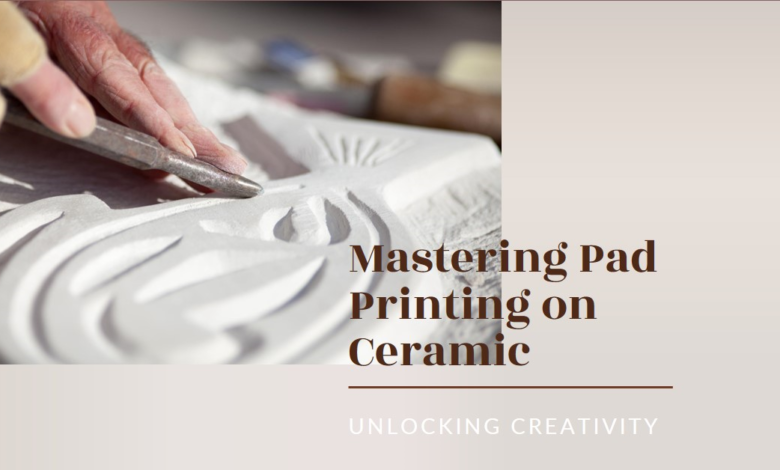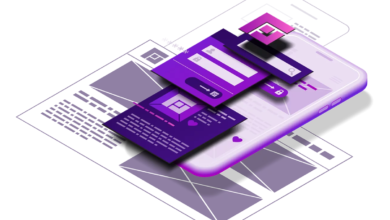
In the realm of creative expression, the surface upon which an artist works can greatly impact the outcome of their masterpiece. When it comes to ceramic surfaces, the possibilities for artistic exploration are vast and compelling. One particularly intriguing technique that has gained traction in recent years is pad printing on ceramic. This method offers a unique way to transfer intricate designs onto ceramic surfaces, opening up new avenues for creativity and innovation.
Understanding Pad Printing on Ceramic Surfaces
Pad printing, also known as tampography, is a versatile printing process that involves transferring a 2D image onto a 3D object. The process utilizes a silicone pad to pick up ink from a printing plate and transfer it onto the desired surface. When it comes to ceramic surfaces, pad printing offers several advantages. Not only does it allow for precise and detailed designs, but it also enables printing on curved or uneven surfaces with ease.
The Art of Preparation
Like any artistic endeavor, successful pad printing on ceramic surfaces begins with thorough preparation. The first step is to select the appropriate ceramic material, ensuring that it is clean and free from any dust or debris that could interfere with the printing process. Next, it’s essential to choose the right type of ink for the project. Ceramic inks are specially formulated to adhere to ceramic surfaces and withstand the firing process, resulting in vibrant and long-lasting prints.
Mastering the Technique
Achieving mastery in pad printing on ceramic surfaces requires a combination of skill, precision, and experimentation. One of the keys to success is mastering the pressure applied during the printing process. Too much pressure can result in smudged or blurred prints, while too little pressure may lead to incomplete transfer of the design. Additionally, understanding the intricacies of the silicone pad is crucial. The pad must be properly primed and maintained to ensure consistent and reliable results.
Exploring Creative Possibilities
Once the fundamentals of pad printing on ceramic surfaces are mastered, artists can begin to explore the boundless creative possibilities that this technique affords. From intricate patterns and designs to bold colors and textures, the only limit is one’s imagination. Experimenting with different printing plates, inks, and surface treatments can yield truly unique and visually stunning results.
Troubleshooting and Problem-Solving
As with any artistic endeavor, pad printing on ceramic surfaces may encounter challenges along the way. From ink smudging to uneven transfer, troubleshooting and problem-solving are essential skills for any artist to develop. Fortunately, there are several common issues that can be easily addressed with a bit of know-how and experimentation. Whether it’s adjusting the pressure of the printing pad or fine-tuning the ink viscosity, a proactive approach to problem-solving can help ensure smooth and successful printing outcomes.
In the world of ceramic art, pad printing stands out as a versatile and dynamic technique for transferring intricate designs onto ceramic surfaces. While the process shares similarities with traditional printing methods, its adaptability to various shapes and textures sets it apart as a valuable tool for artists seeking to push the boundaries of their creativity. Let’s delve deeper into the nuances of mastering pad printing on ceramic surfaces and explore additional insights to enhance your artistic journey.
Choosing the Right Equipment and Materials
The success of any pad printing endeavor hinges on the quality of the equipment and materials used. When it comes to pad printing on ceramic surfaces, investing in high-quality printing pads, inks, and printing plates is essential. Additionally, selecting the appropriate ceramic surface is paramount. Different types of ceramics, such as porcelain, earthenware, or stoneware, may require different printing techniques and materials. Understanding the unique characteristics of each surface ensures optimal printing results and longevity of the finished artwork.
Exploring Advanced Techniques
Beyond the fundamentals of pad printing, artists can expand their repertoire by exploring advanced techniques to achieve nuanced and captivating effects on ceramic surfaces. One such technique is gradient printing, which involves blending multiple colors seamlessly to create stunning transitions and gradients. This technique adds depth and dimension to the artwork, elevating it to new heights of visual appeal. Moreover, artists can experiment with masking and etching techniques to create intricate patterns and textures, further enhancing the complexity and richness of their designs.
Incorporating Mixed Media Elements
While pad printing on ceramic surfaces offers a wealth of creative possibilities on its own, artists can take their work to the next level by incorporating mixed media elements into their designs. From incorporating metallic accents to embedding found objects or incorporating hand-painted details, mixing media adds depth, texture, and visual interest to ceramic artwork. By seamlessly integrating different materials and techniques, artists can create truly unique and captivating pieces that captivate the viewer’s imagination.
Exploring Alternative Firing Techniques
Traditionally, pad printing on ceramic surfaces involves firing the artwork in a kiln to permanently adhere the design to the surface. However, artists can explore alternative firing techniques to achieve different aesthetic effects and textures. Raku firing, for example, is a Japanese firing technique known for its unpredictable and dramatic results. By subjecting the ceramic piece to rapid temperature changes and reducing atmospheres, artists can create unique surface patterns and color variations that add an element of spontaneity and intrigue to their artwork.
Collaborating with Other Artists and Experts
Finally, mastering pad printing on ceramic surfaces is not a solitary endeavor. Collaborating with other artists, technicians, and experts in the field can provide invaluable insights, inspiration, and support. Whether attending workshops, joining artist collectives, or networking with professionals in the industry, engaging with the creative community fosters growth, learning, and mutual encouragement. By sharing knowledge, experiences, and resources, artists can enrich their practice and push the boundaries of what is possible in the realm of pad printing on ceramic surfaces.
Conclusion
In conclusion, mastering pad printing on ceramic surfaces offers artists a unique opportunity to unleash their creativity and bring their visions to life in a tangible and enduring form. By understanding the principles of pad printing, honing their technique, and embracing experimentation, artists can unlock new realms of artistic expression and push the boundaries of what is possible with ceramic surfaces. So, roll up your sleeves, gather your materials, and embark on a journey of discovery and creativity through the art of pad printing on ceramic surfaces. The possibilities are endless, and the results are sure to leave a lasting impression.
Also know Why Offset Printing in Sharjah is the Ideal Choice



